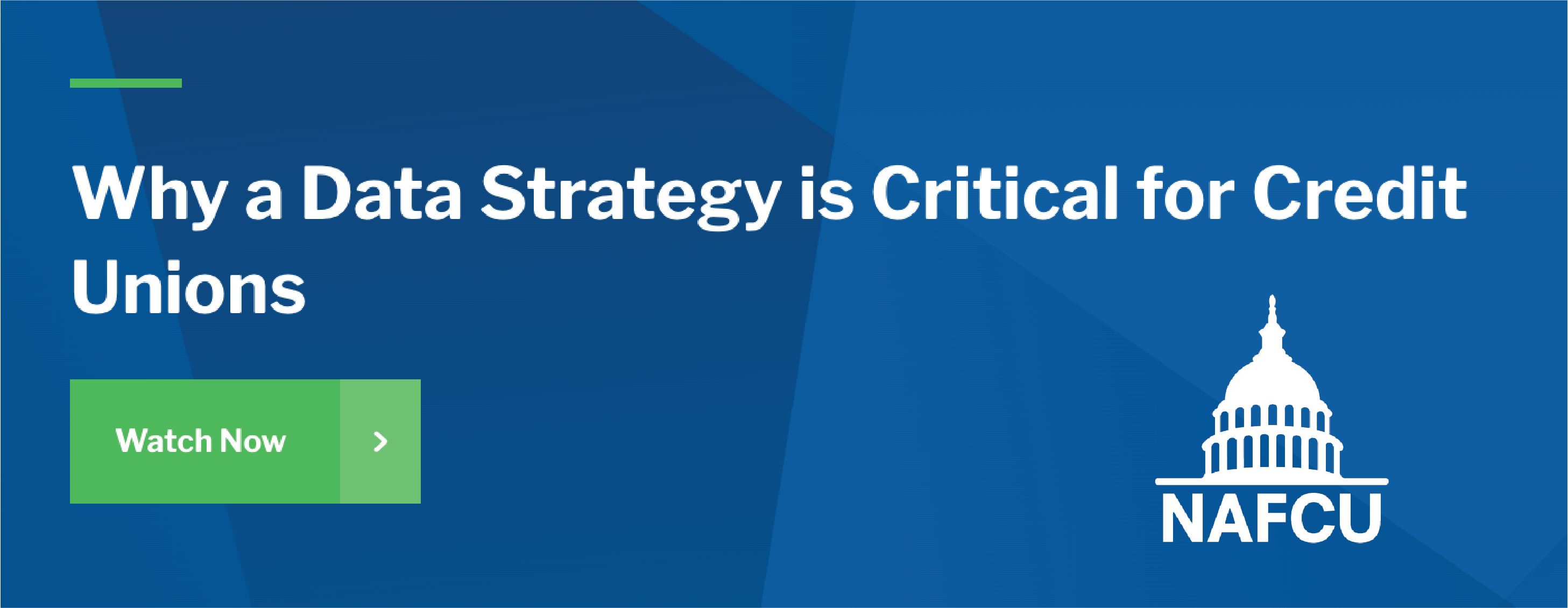4 Ways to Build a Better Data Strategy
by Hannah Barrett, on September 29, 2022
What is the purpose of a data analytics strategy?
A data analytics strategy looks different from organization to organization, depending on individual data needs and your level of technology and resources. Once you put your strategy into action, your data analytics program will comprise of the tools and techniques that the business uses to turn raw data into insights.
These insights are used to make data-driven decisions, backed by a governed, unified, and agreed upon source of truth - no more guessing games.
We had an opportunity to catch up with some big league players in the credit union industry and they discussed all things data strategy. Watch the on-demand webinar below to hear it for yourself from the following presenters:
- George Estrada, Principal Strategic Advisor for Credit Unions with AWS
- Chad Ritchie, Chief Information Officer of Ventura County Credit Union
- Sean Daly, President and CEO of People’s Credit Union
- Jamie Jackson, Founder & CEO of Arkatechture
Key takeaways:
- What is a data strategy?
- Why does your credit union need a data strategy?
- Hear experts discuss their challenges and success in developing a data strategy
Continue reading below for a recap of the top lessons learned from this experience.
Data Strategy
Your data strategy is a living thing. It needs to be reevaluated and modified over time. Technology alone is not a strategy.
You must have a strategy and a plan for how to use it. We've broken this down into 4 pieces that are important to assess where your data analytics program may be lacking, and where it could be enhanced for better data strategizing.
1. People
Assess what your "data team" looks like. Do you have IT professionals, analysts, and developers on your side? Does your team specialize in data analytics for your specific type of organization? It's important to know what your strengths and limitations are in this area before developing your strategy.
If everyone is in charge, no one is in charge. Identify who is in charge of your data analytics strategy plan and implementation. Who will take ownership of the data strategy at your organization?
2. Culture
Do you have a data-driven culture / approach in place at your organization? Your data strategy is not just an IT strategy, it's an organization-wide strategy. It's important to get your entire organization on-board. Make sure that everyone knows your data analytics strategy, and understands the "why" behind it. Continue to discuss and reinforce this with your team, it cannot be reinforced enough.
How will you roll out new self-service data capabilities? One department at a time? A select group of power users? Before you give everyone access, make sure to test and create enough documentation and support for the number and type of users that you'll be working with.
3. Technology & Data
Progressing your data technology is a step-by-step process. What kind of data infrastructure do you have in place? Depending on what you already have or will need, significant investment may be necessary.
How is your data conformed for reporting, and how fast? Are you able to query your data quickly and answer ad-hoc business questions or does it take hours or even days to pull a "simple" report?
It's important to get all of your systems to a place where they’re all speaking to each other before you dive into predictive analytics. This is where a data warehouse or data lakehouse comes into play in order to centralize and govern your decision support system or analytical database.
Here are some questions to ask about your data:
- How much data do you have?
- Where do you source your data?
- How is your data collected?
- Do you have a sufficient amount of historical data to draw on for predicting trends?
- Do you have a way to clean and conform your data?
- What business use cases will you be addressing?
- How will you capture ROI and value on these investments?
4. Evaluate & Iterate
Evaluate as you implement your data strategy and iterate in increments. There is no one-size-fits all. All organizations are different and need different custom strategies to solve the same kinds of challenges. Technology continues to change rapidly, and partners and vendors continue to change, so you need to adapt and be agile in how you reevaluate as you go.
Need some more guidance on developing your data strategy?
We know, it's a lot to think about and organize; it helps to have a data expert on your side! We can help you develop your personalized data strategy and step-by-step road map. Learn more here!





